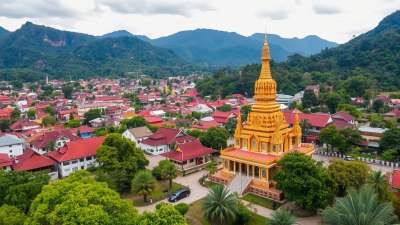How to Avoid Electrical Mishaps When Visiting the Philippines
Essential tips to prevent electrical mishaps during your visit to the Philippines, ensuring a safe and enjoyable experience.

Traveling to the Philippines can be an exhilarating experience, but it comes with the responsibility of being mindful of the local infrastructure, especially when it comes to electrical safety. With beautiful islands, stunning beaches, and a rich culture, the last thing you want is an electrical mishap ruining your trip. Below are some essential tips and guidelines to help you avoid electrical hazards while exploring this beautiful archipelago.
Understanding Electrical Systems in the Philippines
The Philippines uses a 220-volt electrical system, which is different from countries that typically use 110 volts. This means that if you're coming from one of those regions, you need to be aware of the voltage difference that can significantly impact your devices. Check your electronic devices to ensure they can handle 220 volts; otherwise, you may risk damaging them or causing a short circuit. Most modern devices like laptops and smartphones can adapt to different voltages, but always confirm before plugging them in.
Using Adapters and Converters
Electrical outlets in the Philippines usually comply with types A, B, and C standards. If your devices use a different plug type, you'll need to purchase a travel adapter. Adapters allow your plug to fit into the local sockets but do not change the voltage. If your device does not support 220 volts, you'll need a voltage converter to ensure safety. Adapters are widely available in stores, airports, and online, so plan to acquire one before your trip or upon arrival.
Be Cautious of Overloading Outlets
In many accommodations and establishments, electrical outlets may have limited capacity. Avoid overloading outlets with multiple devices as this increases the risk of short circuits or electrical fires. If you must charge multiple devices simultaneously, consider using a power strip that has built-in surge protection. These can be found in local stores, and using them can provide an extra layer of safety.
Check for Electrical Issues in Accommodations
Whether you're staying in a hotel, rental apartment, or with locals, it's crucial to check the electrical fixtures upon arrival. Look for any exposed wiring, smoke damage, or burnt outlets. If you notice any irregularities, report them to your accommodation management immediately. Ensuring that your surroundings are safe reduces the risk of accidents and enhances your peace of mind.
Use Proper Outdoor Appliances Wisely
Many areas in the Philippines have beautiful outdoor settings, and you might be tempted to use outdoor electrical appliances. If you're planning to use any gadgets, like speakers, lighting, or cooking equipment outdoors, ensure they are rated for outdoor use. Using indoor equipment outside can lead to electrical mishaps because they aren't designed to withstand weather conditions. Always check IP (Ingress Protection) ratings, which indicate how resistant the devices are to water and dust.
Understand Local Weather Conditions
Weather in the Philippines can be unpredictable, especially during the rainy season from June to November. Rain can increase the risk of electrical mishaps, so avoid using electrical appliances during storms, especially in areas prone to flooding. Keep your devices away from wet surfaces and ensure all equipment used outdoors has adequate protection against water ingress.
Be Mindful of Power Surges
Power surges are common in the Philippines due to irregular power supply in some areas. Install surge protectors to safeguard your valuable electronic devices against sudden spikes in voltage. This is especially important if you are using multiple devices at once or during storms when power fluctuations often occur.
Understand the Risks of DIY Repairs
Although the idea of fixing electrical issues on your own might seem appealing, it's advisable to avoid DIY electrical repairs unless you are qualified. Engage a licensed electrician to deal with any electrical problems. Attempting to fix issues without the proper knowledge can lead to severe accidents, injuries, or even fatalities. Always prioritize your safety over convenience.
Identifying Safe Charging Locations
When traveling, especially in rural areas, be cautious of public charging stations in cafes or transport areas. Some places may offer free charging, but they might not follow safety standards. Look for locations that use quality charging stations; opting for hotels or established venues with good reputations is advisable. If you're unsure about the safety of a charging station, it's better to err on the side of caution and avoid using it.
Smartphone and Device Safety
Smartphones and other devices have become essential travel companions. When charging your devices, avoid covering them with blankets or clothes. These materials can trap heat, potentially leading to overheating. Also, never leave your devices plugged in unsupervised, especially overnight. Use a timer or a smart plug that will automatically cut off power after a certain period.
Education on Electrical Safety
Before your trip, educate yourself about electrical safety in the Philippines. Knowledge of voltage levels, plug types, and possible hazards will significantly reduce the risk of accidents. Talk to local residents or seek advice from travel blogs or forums where others share their experiences and tips regarding electrical safety in the area.
Know Emergency Contact Numbers
Safety should always be your priority when visiting another country. Familiarize yourself with local emergency contact numbers in case of electrical mishaps or accidents. Having this information readily available can be invaluable. Make sure to have the contact information of your accommodation, local hospitals, and emergency services saved on your phone.
Seek Help From Locals
Engaging with locals can provide additional insights regarding electrical safety. They might offer recommendations on where and how to charge devices safely or share tips on avoiding hazards you may not be aware of as a tourist. This not only enhances your safety but also enriches your travel experience by connecting with local culture.
Conclusion
Visiting the Philippines presents fantastic opportunities for adventure and exploration. However, by understanding local electrical practices and adhering to safety measures, you can greatly minimize your risk of electrical mishaps. Whether it’s understanding voltage differences, using proper adapters, or ensuring safety when using devices outdoors, these steps will enhance your overall travel experience. Stay informed, cautious, and safe, allowing you to enjoy everything this beautiful country has to offer without the shadow of electrical hazards.











